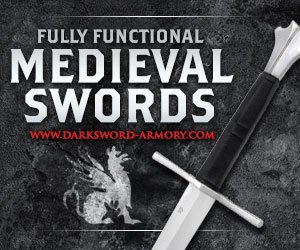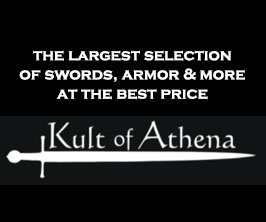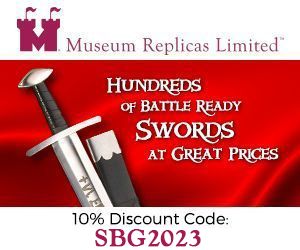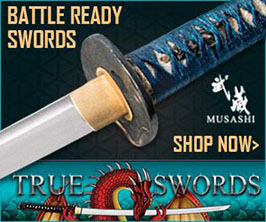- Home
- Ultimate Katana Buyers Guide
- High Quality Katana
- Kesshi Katana Review
An Elite Folded Steel Sword - The Kesshi Reviewed
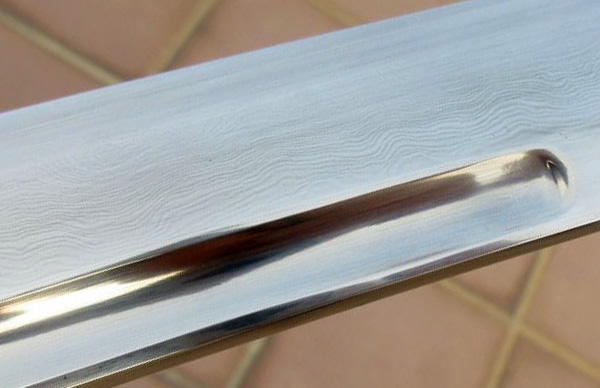 Close up of the Hada Pattern of the Kesshi Katana
Close up of the Hada Pattern of the Kesshi KatanaBuying a Folded Steel sword these days is easy. There are many so called "Damascus steel swords" for sale that on places like eBay it is possible to pick them up for a hundred dollars or less. But it's not usually a good idea unless all you want is an attractive looking wallhanger..
Almost without exception, any folded steel sword under $500 will compromise the structural integrity of the blade..
Back in the old days, the folding was done to even out impurities in the steel. These days, with modern steel being so homogeneous, more often than not it ends up putting air pockets and micro cracks INTO what would otherwise be an excellent piece of steel - and is only done because it looks cool and is traditional..
However, if you go above the $500 price point and the sword is forged by smiths who take the time to do it properly, it can be done in such a way to ensure the blade loses nothing in its overall durability and gains that stunning "hada" pattern that high end Nihonto have by default..
The Imperial Forge Kesshi Katana is one such blade. And in this hands on review, we take a close up look at this limited edition folded steel sword to see exactly what spending the extra money will get you, put it through its paces, and let you decide if it is the kind of sword for you..
Imperial Forge Kesshi Katana
Review by SBG Editor in Chief, Paul Southren

The Imperial Forge started back in 2003 producing battle ready, no frills katana designed for Tameshigiri training for serious martial arts practitioners. The focus of the swords is on the blade, specifically how it is made and how it is sharpened and has a reputation as some of the sharpest mid priced folded steel sword currently on the market today.
It is also, as you can see from the pictures, known as a deep sori katana - i.e. with a more pronounced curvature than a standard katana, which gives it quite a wicked appearance, and it even still in its saya the curvature was the first thing I noticed when unboxing for the first time.

Now with a true folded steel sword swords in this kind of price range there are two directions a forge can take. They can either make a folded steel sword which is very attractive overall or one that has amazing fittings or an amazing blade. But not both… Something will always be slightly off, because while mid-range swords between $500 to $1000 are relatively expensive, to take them to the next level requires an even greater investment of time and money to produce them.
In the case of the Kesshi Katana, my first impression were that the fittings were - to put it plainly - a little bit of a let down..

The ito wrap was tight enough, and alternated correctly - but was seemed to me to be made from synthetic rayon rather than real silk or cotton. Not bad in itself, but at this price point many people - including myself, expect a just little more..
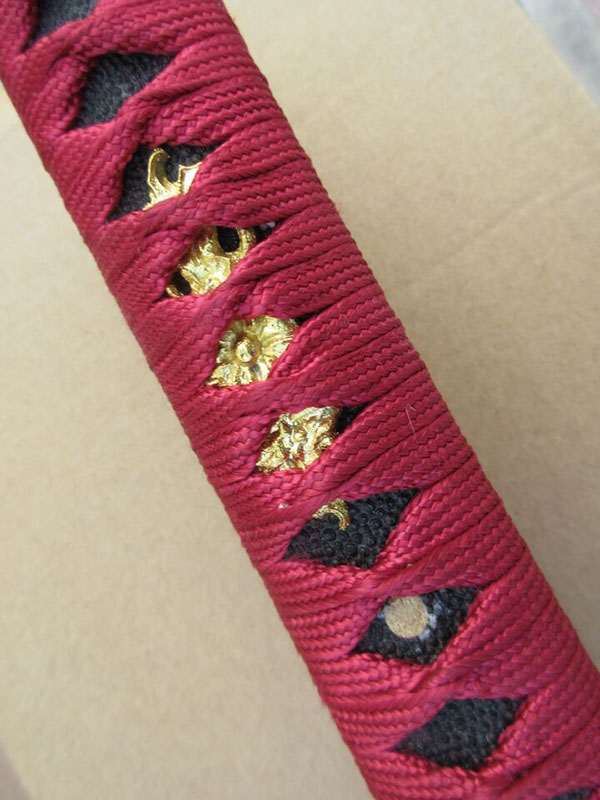
Another minor cosmetic annoyance was there was leftover rice glue near both the bamboo mekugi pegs. The glue is traditionally used to stick the rayskin, which in the case of the Kesshi has been blackened, to the wooden tsuka core - but could have been cleaned up a bit.. I also didn't really like the golden menuki, which looked like plastic, though it probably wasn't. Just kind of looked that way.
On the positive side, the tsuka assembly was good - everything was tightly put together. And while simplistic, the iron tsuba felt solid and had no wiggle.
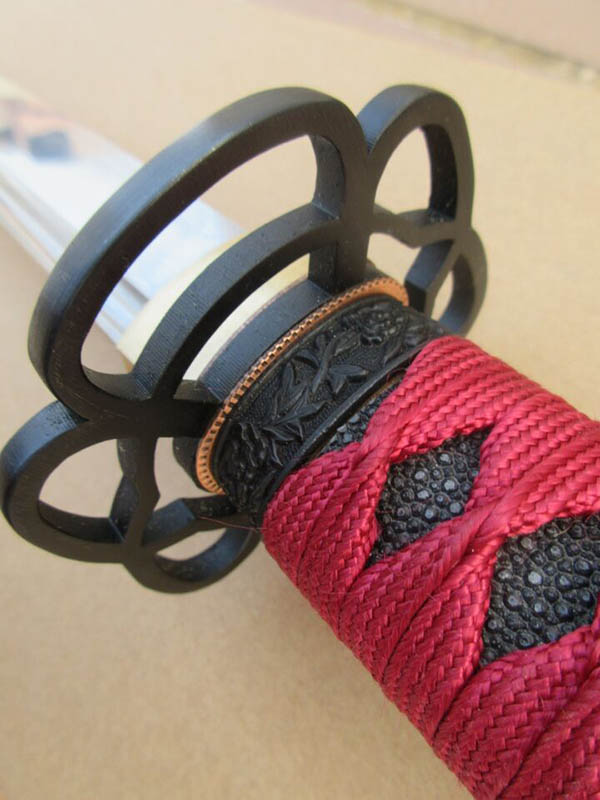
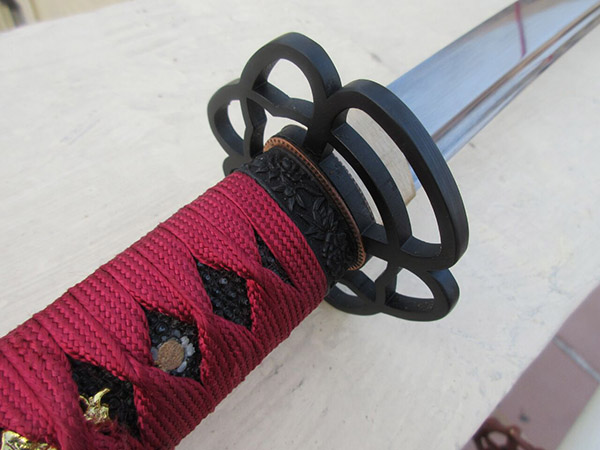
The Fuchi and Kasshira fittings were also rather simplistic and a little hard to make out what the pattern was supposed to be..
I can see some leaves and a chrysanthemum but it is a little "busy" and indistinct to my tastes. To each his own.
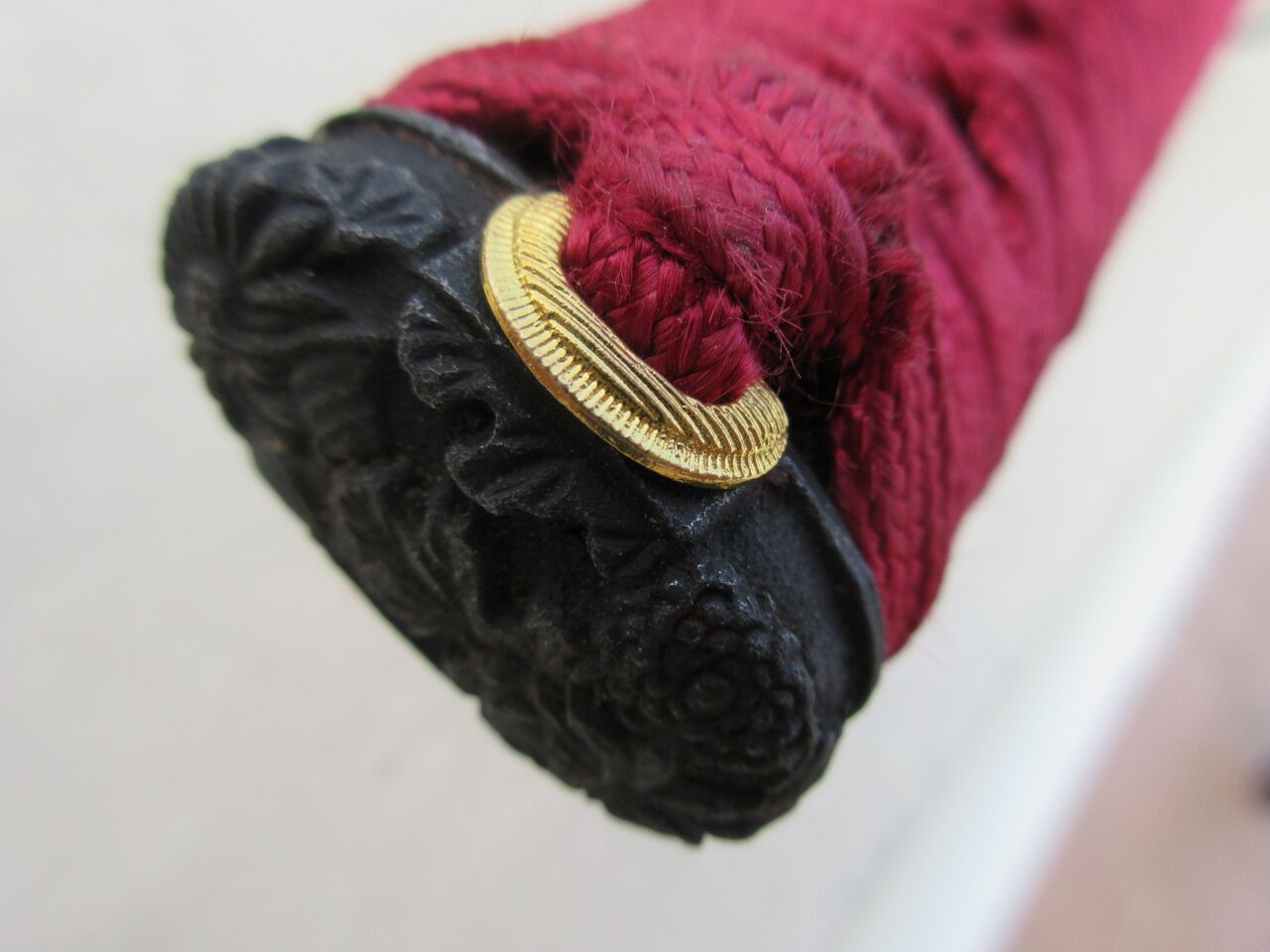
They are advertised as iron, which I confirmed with a simple magnet test - in this case a small magnetic ballbearing.
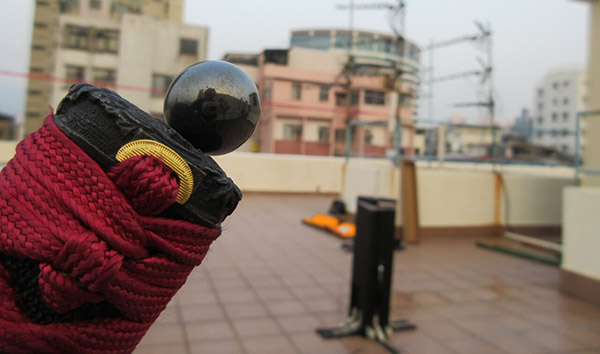 Confirmed as iron with a simple magnetic ballbearing
Confirmed as iron with a simple magnetic ballbearingThe saya was black lacquered with decent fit - nothing much to report on that. So clearly, no one would buy this sword for the fittings. All in all, it was pretty plain looking - but this was as advertised. The focus of this folded steel sword is on its blade, sharpness and cutting ability.
The Blade of this Folded Steel Sword
Now as I mentioned before, the average folded steel sword is purely for show. It doesn't really effect the functionality of a Katana in any positive way and needs to be done properly to avoid creating a whole series of weak points across the blade.
It takes a certain amount of experience to identify if a sword that has been folded IS actually folded at all - some ebay sellers based in China actually stencil the things on. Ironically, this is actually BETTER than if they had folded it from a functional point of view. But with a decent reputation since 2003, you could be pretty confident that when the Imperial forge says the sword has been folded 14 times to produce 16,384 layers - that is what you will get. And close examination revealed no telltale signs of fakery..
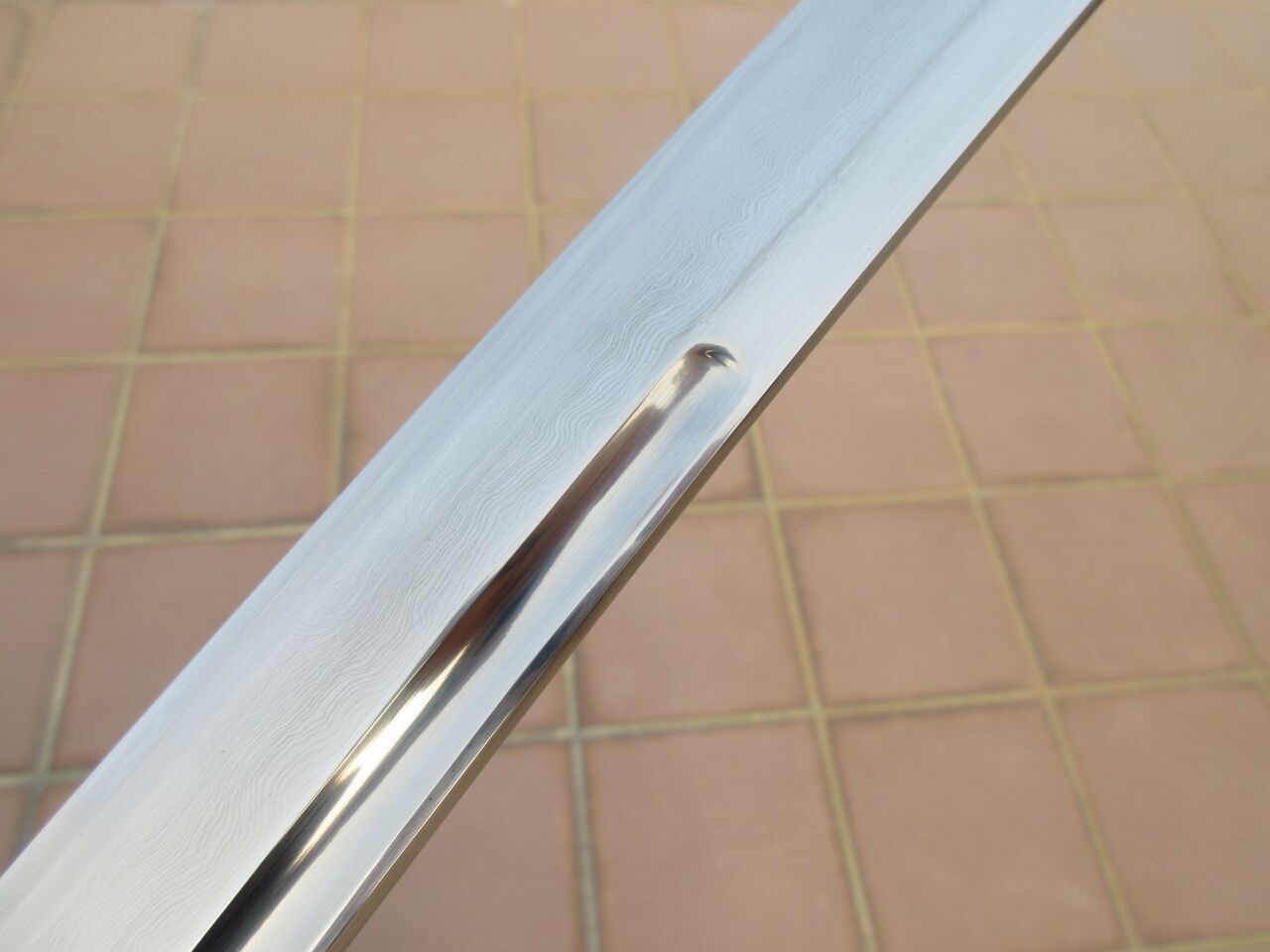
How many layers? Cutting through the BS..
The more layers on a folded steel sword the better right? Not necessarily..
For any decently made folded steel sword, anything between 8 to 14 folds is ideal. Any more than that any you end up with layers that are too thin. Any less, and you end up with potentially huge air pockets. Each time the billet is folded, the number of layers doubles. Fold it once and you get 2 layers. Fold it twice, 4. Here's how it breaks down:
3 folds = 8 layers. 4 folds = 16 layers. 5 folds = 32 layers. Six folds = 64 layers. 7 folds = 128 layers. 8 folds = 256 layers. 9 folds = 512 layers. 10 folds = 1024 layers. 11 folds = 2048 layers. 12 folds = 4096 layers. 13 folds = 8192 layers.
And the Kesshi, folded 14 times, gives you 16,384 as advertised.
If you see swords advertised as folded 1000 times, it is total misinformation. They may have been folded 10 times, giving you 1024 layers - but they sure weren't folded 1000 times..
Likewise, if you see a sword advertised as anything other than the multiples listed above, it is impossible and should make you skeptical of what is being advertised. I have seen swords being advertised as folded 10 times producing 2056 layers and 9 times to produce 1792 layers.. How they defied basic math is truly quite magical and mysterious indeed!
The hada - which is the Japanese word for "skin" - was subtle, nicely polished and all in all - heresy as it may be - comparable to true Japanese Nihonto I have seen in museums..
Yes, clearly here is where the time and effort was being spent - and the result was very impressive.
The blade is also hand clayed and differentially hardened, producing an equally subtle but perfectly executed hamon line.
The quality of the hamon was not quite as good as the folding and I was unable to photograph it very clearly, but it was perfectly acceptable and produced the harder edge and softer spine that a traditional Japanese Katana is famous for.
Furthermore, we actually checked the blade with special hardness testing files to determine the HRC. It is advertised as with a HRC of 62 at the edge and 44 at the spine. Our tests showed between 62-65 HRC at the edge and around 40 near the spine. When you consider the ideal HRC is approx 60 at the edge and 40 at the spine, the result was perfectly acceptable and showed also that the hamon was not purely cosmetic..
Now one area that the Imperial Forge prides itself on is the blades sharpness, and it does not fail to disappoint. My friend Lancelot Chan from Realistic sparring weapons in Hong Kong got to see the sword before me and noted "Edge is pristine, perfect. Edge line super straight. Spine straight."
When I checked it out myself, I noticed the same thing - whoever had polished and sharpened this had done an amazing job. Except for one small area - the tip was not as nicely done nor quite as sharp. But considering the rest of the blade was so sharp and hard it could cut your eye looking at it - I was looking forward to putting it to the test and finding out first hand if it could stand up to some heavy tameshigiri and push it past its intended use to see where the breaking point of this folded steel sword actually was..
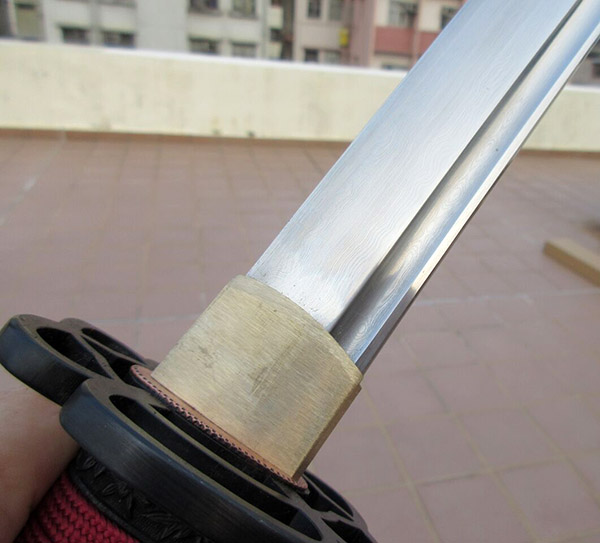
Test Cutting Results...
On the day I tested the Kesshi Katana in Hong Kong we also tested
several other swords that day - including 4 other Katana and 3 medieval style
swords on a variety of targets, starting with water filled bottles and ending
in thick pork legs and bone..
Naturally enough, the blade of the Kesshi sailed through the waterfilled bottles like they were not even there - pretty standard and a target that even the worst made folded steel sword can likely handle without any real difficulty.
The next targets however, were considerably more challenging - thickly rolled newspaper with PVC pipe cores..
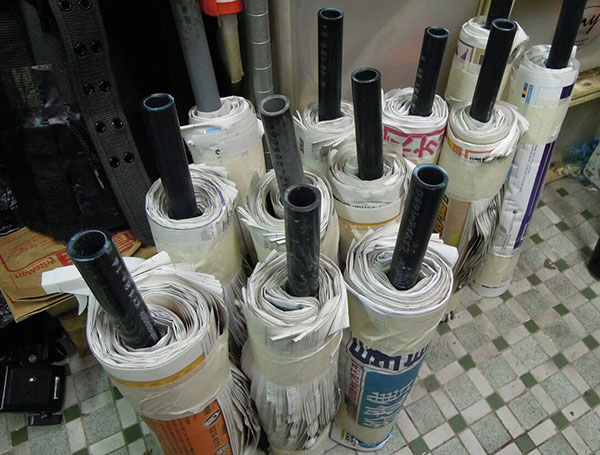
Rolled soaked newspaper is comparable to tatami mats - if somewhat harder to cut depending on the thickness (roll them thick and tightly enough and even the best sword in the world will not cut them!). Add a PVC core pipe and you challenge a sword on two levels that when combined is a very different experience than cutting each component by itself..
For the most part, the medieval swords we tested on the day struggled to make it all the way through - the Kesshi however, had no such troubles, slicing them easily time and time again. It was at this point we would quickly discover if the folding would damage the blades integrity - as a low priced folded steel sword would either quickly chip, roll the edge or even break in half on such targets..
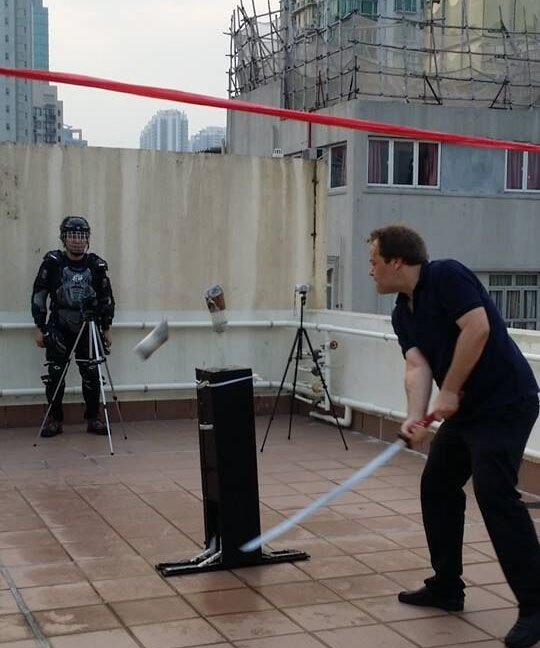
And we were pleased to see, the blade was fine..!
So we upped the ante with super hard, super thick bamboo with walls as thick as a human fingernail is broad - seriously heavy, super hard stuff that would quickly determine if the folding was done properly or not..
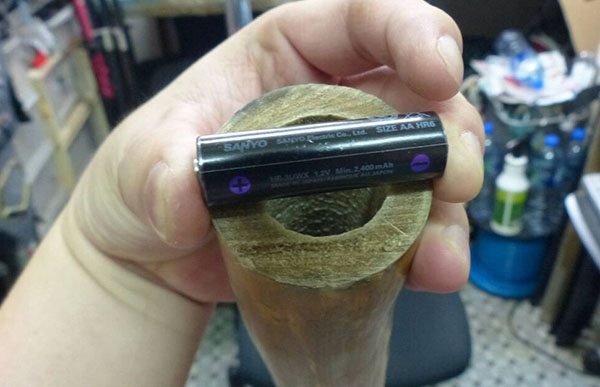 Now THAT is some seriously thick bamboo...
Now THAT is some seriously thick bamboo...Most of the swords we tested really struggled with this super hard bamboo - but not the Kesshi.. The Kesshi cut through with minimal effort where most of the other swords we tested on that day only made it a third of the way through. Careful examination of the blade showed no significant edge damage - clearly it was superior to the average folded steel sword and with such demanding bamboo as a target, went well beyond what was necessary for Tameshigiri.
So we decided to up the ante and test it on a fresh pork leg.. You can see the results of all the tests described below..
The Cold Steel Comparison..
You may have seen the Cold Steel videos where they cut through the whole body of a pig and think "this sword sucks.." but think again before making the comparison..
As I noted to someone who thought this: Cold Steel don't actually cut the leg bones, in the videos I have seen, the pig has had the bones taken out where they cut..https://youtu.be/u3nAuowwqhI?t=1m39sBear in mind, the medieval swords didn't chip either and are made from monotempered steel. This sword is differentially hardened and twice as fast as a Cold Steel.. I would actually rather have this one..
Now here is something "Cold Steel" will never show you..
Cutting pork bone feels like cutting stone - pig bone is a lot harder and denser than human bone, Lancelot described it like "cutting a monster" and while the single handed, straight bladed medieval sword cut into the flesh to the bone, it did not cut through - and the impact was significantly jarring..
The Kesshi on the other hand, cut though - and I could feel the hardeness of the bone and a quick examination of the blade revealed - yes - a dreaded chip!
We tested again a couple of times, and then once straight down onto the stand - which cut through a bunch of joint bones that felt like little rocks.. This was some serious sword abuse, which the medieval sword that was not as sharp or as hard shrugged off - but was more than the Kesshi was ever meant to handle, and when I looked at the blade of this folded steel sword - I almost felt like shedding a tear..
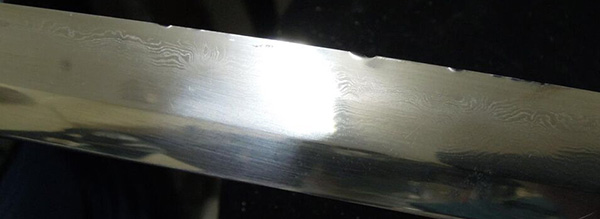
True enough, on a lesser folded steel sword, the damage would have been a LOT worse. And as fresh pork bone is a lot more demanding than traditional tameshigiri targets, it is NOT at all a fail. The sword performed up to and beyond expectations, but this kind of target is not what a traditional Katana is optimized for. The medieval swords we used on the day ARE designed for such targets, as they would frequently encounter shields, helmets, maille hauberks, etc while the Katana was used for fights between unarmored Samurai..
The good news was, while there were multiple minor chips and edge rolling, there were no cracks or damage that could not be cleaned up and repaired - and not wishing to destroy the sword by hitting it on concrete or doing anything else that was abusive, we called it a day and digested the extensive information we had discovered about it..
Conclusion
After all is said and done, the Kesshi Katana - whose name means "do or die spirit" lived up to and exceeded my expectations.
Sure enough, the fittings are not going to win any beauty contests, but they are solid and well assembled. The real beauty of this sword is in the blade - which combines tradition with raw functionality. The partial bo-hi/fuller lightens it to make it feel quite alive in the hand, the extra curvature helps it to cut through any standard target with ease, and the razor sharp edge is hard and strong enough to cut ridiculously thick bamboo.. But keep it away from rabid pigs - or at least - the hard bones in their legs unless you want to re-hone it..
PROS
- Traditional, attractive blade with real hamon and hada
- Perfectly straight sighted down the blade
- Deep Sori for extra cutting power
- Hard and razor sharp edge
- Solidly constructed fittings
CONS
- Fittings are a bit plain and could be better executed cosmetically
- Kissaki tip counterpolish is not as sharp or as nicely done as the rest of the blade
WHERE TO BUY
The price tag of the Kesshi varies quite a bit - the maximum price,
which is the MSRP is $1,400, is a bit steep though not completely unreasonable
considering it is a properly folded and traditionally clayed blade clearly made
by a forge that knows what it is doing. However you can pick it up for a much
more reasonable $749.95 right here at Kult of Athena - plus, as stock can be hard to find of any particular model in the series, the others can be found here, including several different color variations and styles.
I hope this review and information on this Folded Steel Sword has been helpful. To return to The Ultimate Guide to Authentic Japanese Swords from The Kesshi - an Elite Folded Steel Sword Reviewed, click here










